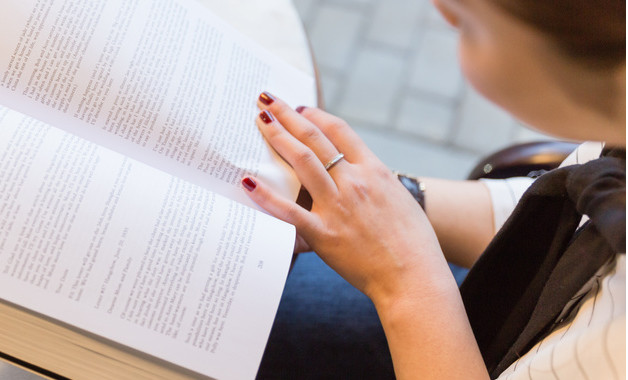
第1篇 中考英语重点短语总结
中考英语重点短语总结
1.a path of travel旅行路线
2.point at / to指向
3.by sea = by ship乘船 , by the sea = on the sea 在海边, at sea在海上
4.set ones mind to do sth.一心想做某事
5.multiplyby乘以
6.see you!再见 you see.你知道,你明白,你瞧 , let me see.让我想想, see sb. off给某人送行 , see a / the doctor看病, see sb . do / doing sth.看见某人做某事
7.someothers一些(人,物)其他(人,物) oneanother一个..另一个(三者或以上 ) onethe other一个另一个(总数二个)
8.be worn out穿旧,磨坏 , check out核实,检查 , write out写出 , take sth. out of从拿出/取出某物
9.in this way用这种方法 , in a few years time几年以后 , in space在太空 , in and out of class在课内课外 , in the last fifteen minutes在最后十五分钟里 , in the second half 在下半场 , later in ones life在某人后半身 , in the air在空中 , in the open air在户外
10.give sb. an injection给某人打针 , get an injection打针
第2篇 小学二年级英语重点句型总结
(一)喜欢和不喜欢句型:(module 1-2)
(1)a:what do you like? (你喜欢什么) what does he/she like? (他/她喜欢什么?)
b:i like jigsaws. (我喜欢拼图) he/she likes bikes.(他/她喜欢自行车)
(2)a:do you like dolls? (你喜欢娃娃吗?)
b:yes, i do./no, i don‘t. (是的,我喜欢/不,我不喜欢)
(3)i don’t like this party. (我不喜欢这个聚会)
he/she dosen‘t like these shoes. (他/她不喜欢这双鞋)
(二)have句型:(module 3)
(1)we have english in the morning. (早上我们有英语课)
(2)do you have maths in the afternoon? (下午你有数学课吗?)
yes, i do./ no, i don’t. (是的,我有。/不,我没有)
(三)时间句型:(module 4-5)
(1)a:what‘s the time now? (现在几点了?)
b:it’s 2 o‘clock. (两点了)
it’s half past 7. (7点半了)
(2)a:is it 5 o‘clock? (是5点吗?)
b:yes, it is./ no, it isn’t.
(3)i get up at 7 o‘clock in the morning. (我早上7点起床)
i have breakfast at half past 7 in the morning. (我早上7点半吃早饭)
(四)有关周末活动的句型:(module 6-7)
(1)a:what do you do at the weekend? (周末你做什么?)
b:i watch tv. (我看电视)
(2)a:do you play football at the weekend? (你周末踢足球吗?)
b:yes, i do./ no, i don’t.
(3)a:where do you play football? (你在哪踢足球?)
b:i play at the park. (我在公园踢)
(五)交通方式句型:(module 8)
(1)a:how do you go to school? (你怎么去学校?)
b:i go to school by bus.(我乘公共汽车去上学)
i walk to school. (我步行去学校)
(2)a:how does your father go to work? (你爸爸怎么去上班?)
b:he goes to work by bike. (他骑自行车去上班)
(3)a:does tom go to school by car? (tom 乘小汽车去上学吗?)
b:yes, he does./ no, he doesn‘t.
(六)有关四季的句型:(module 9)
(1)it’s spring/ summer/ autumn/ winter.
(2)it‘s warm/ hot/ cool/ cold.
(3 ) we wear jackets.
(七)有关新年的句型:(module 10)
happy new year.(新年快乐)
happy christmas.(圣诞快乐)
we eat dumplings at chinese new year. (在中国的新年我们吃饺子)
第3篇 小学五年级英语重点词句知识点总结
导语芬芳袭人花枝俏,喜气盈门捷报到。心花怒放看通知,梦想实现今日事,喜笑颜开忆往昔,勤学苦读最美丽。在学习中学会复习,在运用中培养能力,在总结中不断提高。以下是为大家整理的《小学五年级英语知识点总结》 供您查阅。
重点归纳一
unit 1
1. the first day 第一天
2. the new term 新学期
3. all the students 所有学生
4. at school 在学校
5. each other 互相
6. a new building 一幢新教学楼
7. a lot of rooms 许多房间
8. how many 多少
9. two reading rooms两间阅览室
10. have a look 看一看
11. go and play 去玩
12. go and see. 去看看
13. go and have a look 看一看
14. a lot of flowers and trees 许多花和树
15. good idea 好主意
16. in the street 在街道上
17. on the plate 在盘子里
18. on the table 在桌子上
句子
1. is there a garden in the school? no, there isn’t.
学校里有个花园吗?不,没有。
2. is there a reading room near the playground? yes, there is.
操场附近有个阅览室吗?是的。
3. are there any bookcases near the window? no, there aren’t.
窗子附近有一些书橱吗?不,没有。
4.are there any pictures on the desk? yes, there are. 课桌上有一些图片吗?是的。
5. how many tv rooms are there in the building? there are four.
大楼里有几间电视房?有四间。
6. i’m not sure.我不能确定。
:重点归纳二
unit 2
1. my parents 我的父母
2. live in a new house 住在新房子里
3. near her school 在她的学校旁边
4. very much 非常
5. a large sitting-room 一个大客厅
6. in your bedroom 在你的卧室
7. some dolls 一些洋娃娃
8. a map of the world 一张世界地图
9. on the wall 在墙上
10. behind the door 在门后面
11. in the cat’s mouth在猫的嘴里
12. look happy 看上去高兴
13. in the afternoon 在下午
14. in the music room 在音乐室里
15. near the bed 在床边
16. on the desk 在桌上
17. in picture 1 在图片1
18. the rabbit in the black hat 带着黑帽子的那只兔子
句子
1. what’s between the chairs? there’s a telephone between the chairs.
椅子中间有什么?椅子中间有个电话机。
2. what’s on the table? there are some glasses on the table.
桌子上有什么?桌子上有些玻璃杯。
3.there isn’t a pencil on the desk. 课桌上没有一支铅笔。
4.there aren’t any pictures on the wall. 墙上没有任何图片(复数)。
重点归纳三
unit 3
1. have a music lesson 上音乐课
2. sing a song 唱一首歌
3. play the violin 拉小提琴
4. listen to 听
5. follow me 跟着我
6. sing it together 一起唱
7. make a puppet 做木偶
8. make a model plane 做模型飞机
总结:本文就是为大家整理的五年级英语知识点的相关内容,希望大家认真阅读,努力提高自己的英语水平。
第4篇 小学英语重点难点总结
一、词类
动词、名词和形容词不太容易区分,如不能一眼看出,可用如下方法:
先用“一(量词)”(如:一个、一张等)和这个词连起来说,如说得通,一般认为是名词;说不通再用“很”去判断,就是把“很”和为个词连起来说,说得通一般就是形容词;都说不通就是动词。(目前我们学过的,以后可能不同)(另外一些很明显的,如人称代词、数词、情态动词等一下就可以知道)
01
动词
这里所说的动词是指各种动词总称,其中包括行为动词(就是我们平时总说的那种动词)、be动词、情态动词。
(1)行为动词
就是我们平时说的动词,表示某一动作或行为。如:sweep、live等。
行为动词我们已学过它们的四种形式:
原形、+s/es、+ed、+ing,
具体判断方法如下:
有,就加ing
读句子→读该单词→认识该单词→理解意思→看有无be动词 (若是be going to就用原形)
没有,再看情态动词
有,就用原形
有,就加ed
没有,再看有无表示过去的时间状语 ↗是第三人称单数就加s或es
没有,再看主语
不是第三人称单数就用原形
(2)be动词
a、am--was is --was are--were口诀:我用am,你用are, is用在他她它,所有复数全用are。
b、肯定和否定句 i am (not) from london. he is(not) a teacher. she is(not) in the dining room. my hair is(not) long. her eyes are(not) small.
c、一般疑问句 am i a chinese? yes, you are. no, you aren’t. are they american? yes, they are. no, they aren’t. is the cat fat? yes, it is. no, it isn’t.
我们现在学过的be动词大致分两类:is、am、are为一类,一般用于一般现在时、现在进行时和一般将来时中,was和were为另一类,一般用于一般过去时。
判断步骤:
第一、三人称单数,就用was
↗有,再看人称
第二人称单数和所有复数,就用were
看有无表示过去的时间状语
第一人称单数,就用am
↘没有,再看人称→第三人称单数,就有is
第二人称单数和所有复数,就用are
02
名词
表示某一事物,有具体的和抽象的之分。判断的关键词往往是be动词,be动词如果是am、is或was,名词就用原形;be动词如果是are或were,名词就加s或es。
这里强调两点:不可数名词都默认为单数,所以总是用is或者was;不要根据some、any、a lot of等词去作判断,以免受误导。
如何加后缀:
a.一般情况下,直接加-s,如:book-books, bag-bags, cat-cats, bed-beds
b.以s. x. sh. ch结尾,加-es,如:bus-buses, box-boxes, brush-brushes, watch-watches
c.以“辅音字母+y”结尾,变y为i,再加-es,如:family-families, strawberry-strawberries
d.以“f或fe”结尾,变f或fe为v,再加-es,如:knife-knives
e.不规则名词复数: man-men, woman-women, policeman-policemen, policewoman-policewomen, mouse-mice child-children foot-feet ,.tooth-teeth fish-fish, people-people, chinese-chinese, japanese-japanese
03
形容词(包括副词)
形容词表示某一事物或的特征,副词表示某一动作的特征。
形容词和副词只有两种形式:原形和+er。
未作比较的情况下就用原形,比较时就+er。
两个重要特征:as……as中间一定用原形,有than的时候一定+er。
04
人称代词和物主代词
人称代词物主代词
单数复数单数复数
主格宾格主格宾格形容词性(短)名词性(长)形容词性(短)名词性(长)
第一人称 i me we us my mine our ours
第二人称 you you you you your yours your yours
第三人称 he him they them his his their theirs
she her her hers
it it its its
人称代词:
有主格和宾格之分。
一般动词前用主格,动词后用宾格。
物主代词:
有两类:形容词性物主代词(短的)和名词性物主代词(长的)
一般看后面有没有名词,如有,就用形容词性物主代词(短的);如无,就用名词性物主代词(长的)。
05
数量词
我们学过两类:基数词和序数词。基数用于表示数量多少,而基数词用于表示次序,常在日期中出现。
06
冠词
有a、an、the。a和an有具体的意思,一(个…),the没有具体意思,有时翻译为这、那。确定用a、an还是the时可根据汉语意思。a和an的区别:an用于元音音素(一般就是元音字母aeiou)前,a用于辅音音素前。
二、否定句
表示某一否定意思。句中一定有not。
有三种可能:be动词(am、is、are、was、were)+not、情态动词(can、must、should)+ not、助动词(do、does、did) + not
如何将一个肯定的陈述句改为否定句:
1、看句中有无be动词,如有,直接在be动词后+ not。
2、看句中有无情态动词,如有,直接在情态动词后+ not。
3、如上述二者都没有,就应用助动词+ not。
分四个步骤:
(1)肯定陈述句中本来是没有助动词的,要加上去,位置在主语(某人或某物)后,动词前。
(2)确定助动词用do、does还是did,根据句中动词,动词是原形的助动词就用do,动词是第三人称单数的助动词就用does,动词用过去式的助动词就有did。
(3)在助动词后加not。
(4)原句中动词假如发生变化就要恢复成原形。
强调一点,有some的要考虑是否要用any。
三、一般疑问句
表示疑问,一般回答只有两种可能yes,……或no,……句中没有疑问词。
如何将一个肯定的陈述句改为否定句:
1、看句中有无be动词,如有,把be动词提到句首即可。
2、看句中有无情态动词,如有,把情态动词提到句首即可。
3、如上述二者都没有,就应把助动提到句首。
分四个步骤:
(1)肯定陈述句中本来是没有助动词的,要加上去,位置在主语(某人或某物)后,动词前。
(2)确定助动词用do、does还是did,根据句中动词,动词是原形的助动词就用do,动词是第三人称单数的助动词就用does,动词用过去式的助动词就有did。
(3)把助动词后提到句首。
(4)原句中动词假如发生变化就要恢复成原形。
强调一点,有some的要考虑是否要用any。
四、特殊疑问句
表示疑问,有疑问词(在开头),回答有很多种可能。
常用疑问词:
what、when、which、who、whose、why、how
五、祈使句
表示请求或命令别人做某事或不要做某事。
肯定祈使句一定是以动词原形开头(有时有please),否定的祈使句一定是don’t加动词原形开头(有时有please)。
把祈使句改为否定句只需在动词前加don’t即可。
六、时态
1
一般现在时
(1)句中be动词和动词一般情况下只能有一种而且也必须有一种。如:
the children are very happy on christmas day .
(2)一般现在时中的be动词:
一般用原形:am is are
am用于第一人称单数(i);is用于第三人称单数(he she it和其他人名或称谓,如:ben his sister等);are用于第二人称单数(you)和所有复数(包括第一人称复数we、第二人称复数you;第三人称复数they和其他复数,如the children 、 his parents等)。
(3)一般现在时中的动词:
有两种情况:
第一种情况:主语是第三人称单数(he she it和其他,如helen 、her cousin等),动词后一般加s或es。
第二种情况:主语不是第三人称单数,动词都用原形。
2
一般过去时
(1)句中be动词和动词一般情况下只能有一种而且也必须有一种。如:
the girls were on the grass just now .
they visited my parents last weekend .
(2)一般过去时中的be动词:
一般用过去式:was were
was用于第一人称单数(i)和第三人称单数(he she it和其他人名或称谓,如:ben 、 his sister等);were用于第二人称单数(you)和所有复数(包括第一人称复数we、第二人称复数you;第三人称复数they和其他复数,如the children 、 his parents等)。
(3)一般过去时中的动词:
一般只有一种情况:+ed
这里强调一点,和一般现在时不同的是这里不管主语是第几人称,也不管是单数和复数都加ed。
(4)有用的的依据:
be动词是was或were该句是一般过去时
动词加ed有表示过去的时间状语
3
一般将来时
(1)构成形式:
be going to +动词原形。
这里强调一点,be动词、going、to以及动词原形共四个单词缺少其中任何一种都不可以构成一般将来时。
(2)一般将来时表示动作即将发生或某人打算做某事。
(3)有用的依据:
一个句子中既有be动词,又有going、to和动词,且动词用的是原形←→该句是现在进行时
(4)句中往往有tomorrow、soon、next week等词。
4
现在进行时
(1)构成形式:
be动词+动词的ing形式
这里强调一点,两者缺少其中任何一种都不可以构成现在进行时。
(2)现在进行时表示动作正在进行或事情正在发生。
(3)有用的依据:
一个句子中既有be动词,又有动词,且动词加了ing ←→该句是现在进行时
(4)句中往往有now、look、listen等词。
七、have、has和there be结构
1、there be结构包括there is there are there was there were
2、和have、has、had的区别:
(1)there be句型表示:在某地有某物(或人)
(2)在there be句型中,主语是单数,be动词用is ;主语是复数,be动词用are ;如有几件物品,be动词根据最近be动词的那个名词决定。
(3)there be句型的否定句在be动词后加not ,一般疑问句把be动词调到句首。
(4)there be句型与have(has)的区别:there be表示在某地有某物(或人);have(has)表示某人拥有某物。
(5)some和any在there be句型中的运用:some用于肯定句, any用于否定句或疑问句。
(6)and和or在there be句型中的运用:and用于肯定句, or用于否定句或疑问句。
(7)针对数量提问的特殊疑问句的基本结构是: how many + 名词复数 + are there + 介词短语? how much +不可数名词 + is there +介词短语?
(8)针对主语提问的特殊疑问句的基本结构是: what’s + 介词短语?
(9)there be结构一般用在句子的开头,而have等词只能用于某一个主语后面。
第5篇 关于小学三年级的英语重点句子总结
问姓名
what is yourhisher name?
myhisher name is jenny.
问颜色
what colour is it?
what is your favourite colour?
it is red.
my favourite colour is blue
问地方
where is my book?
there it is!
问数量
how many pens do you have?
four.
问感觉
how do you feel?
i am happy!
问事物
what is this?
it is a book.
问事情
what is the matter?
what are they doing?
i cut my knee.
they are playing.
问年龄
how old are you?
i am ten years old.
要东西
may i have two books, please?
sure!









